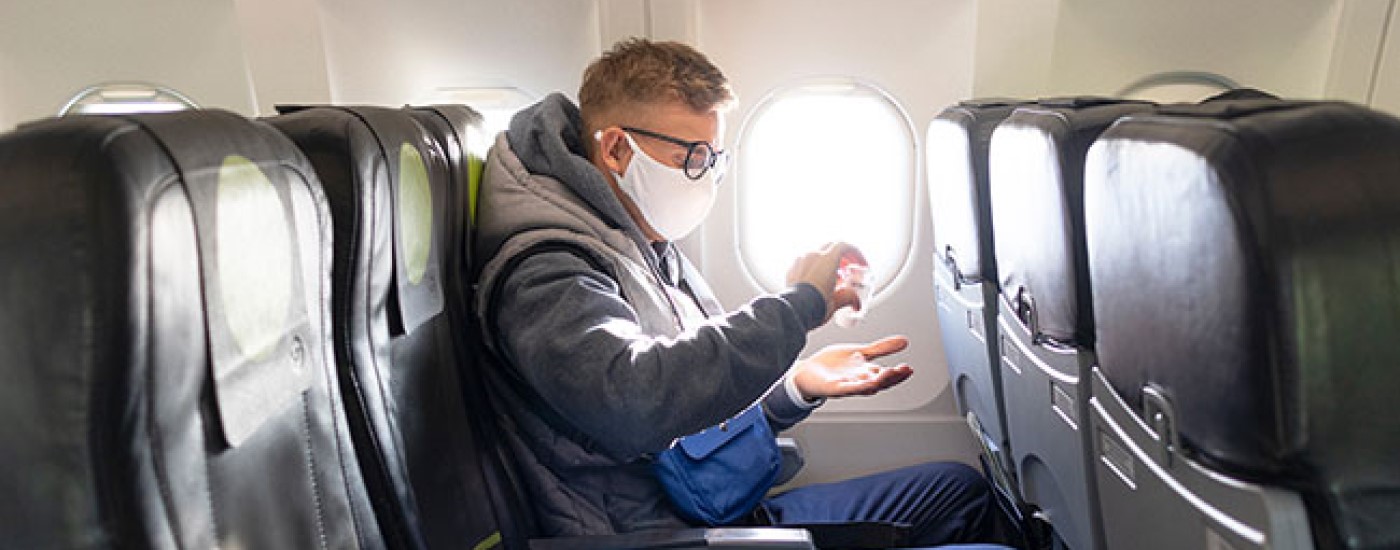The COVID-19 pandemic has dramatically changed the experience of taking a flight. What used to be a relatively easy and smooth process has become fraught with a host of rules, requirements and regulations by which travellers must abide.
It’s easy to feel confused by it all, and to just to park any plans you might have had to fly until things are more back to normal. But it doesn’t have to be that way. With a few sensible steps and a bit of forward planning, it’s possible to limit the risk of infection and carry on with your travels. Here are our top tips on how to fly right in 2021.
1. Research your airline
We pulled together a handy guide to what measures airlines are taking to protect their passengers’ health. But these are evolving pretty regularly, so you should also take the time to consult the airlines’ own website for the latest information.
What is clear is that every airline is desperate to get people flying again, and they’re implementing a wide range of service enhancements and onboard product changes to ensure they are abiding by national and international hygiene standards, both on the ground and in the air. From the appointment of ‘Wellness Ambassadors’, to reducing the capacity of their flights to ensure social distancing is maintained onboard, there’s quite a variety of innovations in play now. But, at the very least, you should be expecting them to be using HEPA air filters, enhanced cleaning between flights, and enforcing the use of face masks on board.
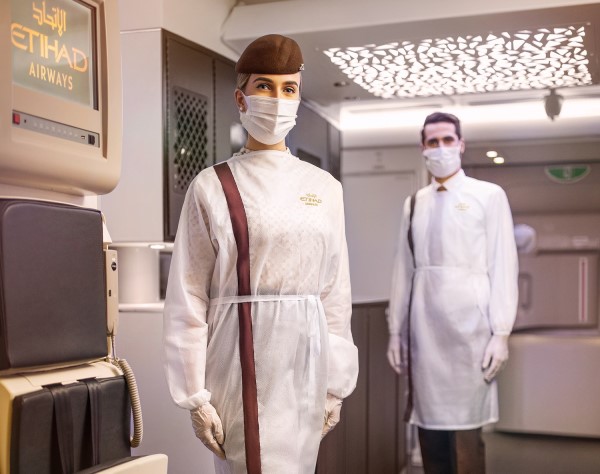
2. Get tested
While airlines don’t yet require customers to have a negative COVID-19 test result before flying, some destinations do – and if you can get a test, there’s certainly no harm in doing so.
Not only will a negative result put your own mind at rest, it will also ensure you can be confident that you won’t, unwittingly, be taking the virus to a place where they will be engaged in their own efforts to combat the virus.
3. Travel off peak
Although a reduction in flights means that passengers are being pushed on to fewer flights, full aircraft are something of a rarity these days.
But, to increase your chances of having plenty of space around you – and therefore limiting your potential exposure to the virus – consider flying during off peak periods. Early in the morning, late at night and mid-week are all normally quieter times to fly.
Not only might your flight be less busy, it’s also likely the airport will be as well, meaning fewer queues at check-in, security, immigration or baggage reclaim. All this, along with the many other steps airports are taking, further reduces your chance of infection.
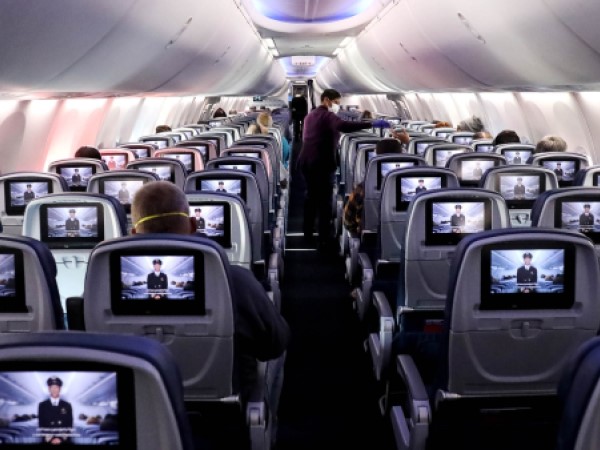
4. Avoid taking public transport to/from the airport
Although most countries now require citizens and visitors to wear a face mask when on public transport, adherence to the rule is by no means universal, and enforcement is a challenge.
To bypass the potential for infection from a journey on a crowded bus, train or tube to the airport, try to travel by private car instead, where you’ll be able to control your environment more effectively.
5. Follow the new rules in the airport
Airports all over the world have made many changes to how they operate, to ensure they’re doing what they can to reduce potential infection rates. Many now don’t even allow you to enter unless you have a valid ticket to travel that day and, once inside, travellers will find check-in staff seated behind screens, sanitation stations and regular deep cleaning, self-service luggage drop-off, and security staff in full PPE. Once you’ve gone through security, you can expect most restaurants, cafes and shops to be either closed or operating at limited capacity.
It’s different to what we’re used to, but airport owners have worked with airlines to keep things as ‘normal’ as they can. Not long ago, we visited Heathrow’s Terminal 5 to see what those changes look like in reality.
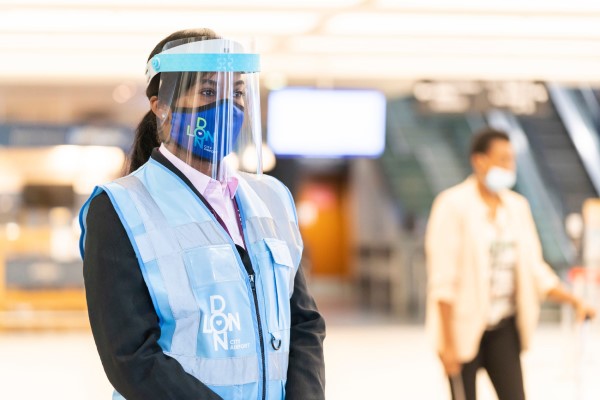
6. Be prepared
Gone are the days of simply having to remember to pack fluids in your hold luggage. Keeping safe on a flight now means bringing hand sanitiser, alcohol wipes, tissues, and a face mask to use on board – at a minimum. In addition, we’d recommend you bring your own inflight blanket and pillow (as many airlines have stopped providing them) and your own food – as inflight meal services have been cut back.
In fairness, many airlines are now supplying such items in special ‘hygiene packs’ (in place of the old amenity kits passengers were given), but it’s wise not to assume they’ll be available.
7. Take care on the flight itself
On a busy flight, observing social distancing is going to be a challenge. But, with hospital-grade HEPA air filters in use on most aircraft, the germ spread in such an enclosed space is less of an issue than you may think – even though keeping two metres away from other passengers and always wearing your face mask are optimal factors.
That said, it’s possible to minimise the risk of infection by taking other common sense precautions. Use hand sanitiser regularly, avoid touching your mouth, nose and eyes, and keep as much distance as you can between you and other passengers. And try not to touch high-contact hard surfaces, like seat back screens and tray tables, and handrails in the airport.
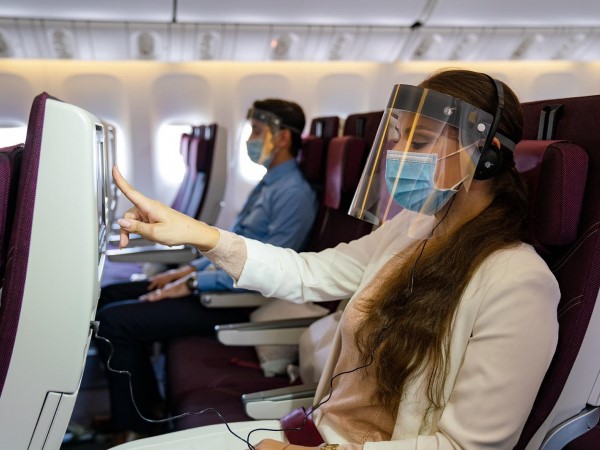
Most importantly, if you or anyone in your party feels unwell – particularly if they have a high temperature, a persistent cough, or a loss of taste or smell – then don’t travel. Flying in 2020 is as much about common sense and social responsibility as it is about getting from A to B. By using the former, and being responsible for your own health as much as your fellow travellers, then everyone should be able to do the latter with more freedom, as we adjust to the new world.

